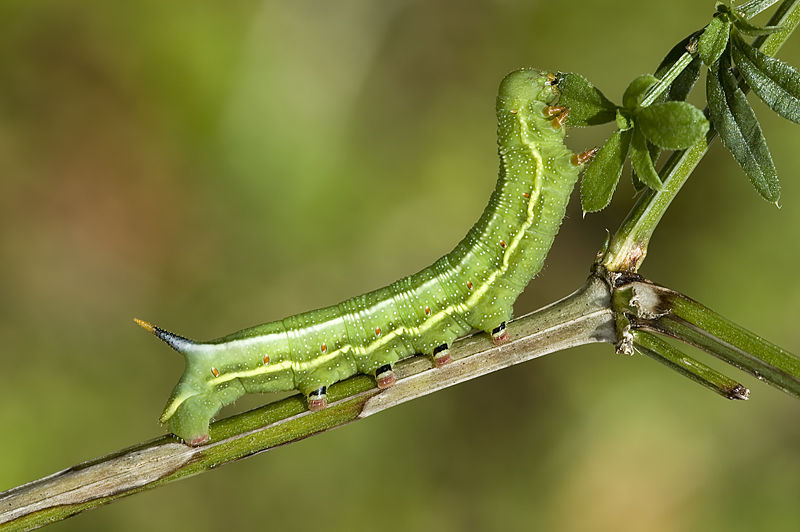What hummingbird hawk-moth looks like: Images and features of this remarkable insect
 What does a hummingbird hawk-moth look like (photo: Wikipedia)
What does a hummingbird hawk-moth look like (photo: Wikipedia)
Just as people rely on their eyes to make precise hand movements, hummingbird hawk-moths (Macroglossum stellatarum) use continuous visual feedback to accurately position their proboscis at the center of flowers.
RBC-Ukraine tells about an insect with a giant proboscis resembling a bird.
Features of the hummingbird hawk-moth
The hummingbird hawk-moth (Macroglossum stellatarum) inhabits Europe and North Africa, migrating north in summer and south in winter. It feeds on nectar.
This charming creature resembles a hummingbird but is actually a moth. It even flies like a bird: its wings beat so rapidly that they produce an audible hum. According to PBS Nature, it flaps its wings approximately 85 times per second - more than some species of hummingbirds.
_in_flight.jpg)
Appearance of the hummingbird hawk-moth (photo: Wikipedia)

Appearance of the hummingbird hawk-moth (photo: Wikipedia)
The hummingbird hawk-moth is attracted to flowers with tubular petals and uses its long, coiled proboscis to suck nectar from the center of the flower. Its proboscis is almost as long as its body, and when not in use, it is curled up like a spiral.
One of the most remarkable features of the hummingbird hawk-moth is its vision. Unlike most insects, this moth relies on its eyes to accurately position its giant proboscis at the center of flowers.
This can be compared to how a person tries to move a straw protruding from their mouth into a glass—and the straw turns out to be as tall as they are, says Anna Stöckl from the University of Konstanz in Germany.

Appearance of the hummingbird moth caterpillar (photo: Wikipedia)
In a study published on January 29 in the journal PNAS, Stöckl and her colleagues used high-speed cameras to capture hummingbird hawk-moths flying alongside artificial flowers with different patterns on them. They discovered that the moths used continuous visual feedback to precisely adjust their movements to the patterns and ensure that their proboscis reached the center of the pattern where the nectar should be.
Achieving this under visual guidance requires a rather complex neural pathway, so it is more common in mammals. However, hummingbird hawk-moths demonstrate that they are also capable of performing this complex behavior even with their relatively simpler nervous system.
Stöckl said that the use of vision to control the proboscis is actually something that isn't often found in insects. Having a potential example of an insect controlling a very unusual proboscis using vision was really exciting.

Close-up of the hummingbird hawk-moth (photo: Wikipedia)
Sources: LiveScience, Animal World, Animalia.bio, PBS Nature, and Wikipedia.

